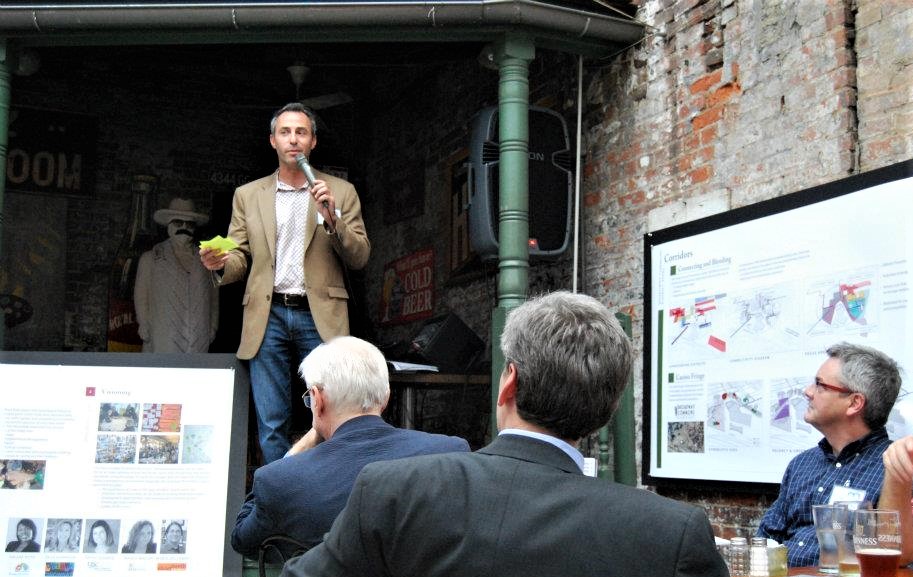
Broadway Commons District Plan
Year: 2010 – 2013
Client: City of Cincinnati, Ohio
Partners: University of Cincinnati Niehoff Urban Studio; Local Initiatives Support Corporation
In 2009, Ohio voters passed a resolution legalizing gambling in the state. A 20 acre downtown parking lot in Cincinnati, Ohio was to be the location for a property co-developed by Caesar’s and Rock Ventures. This was a highly contentious development which the community and the City were unprepared. Five very diverse neighborhoods surrounded the site, and stakeholders were apprehensive in getting involved as they lacked a vision for such an unforeseen change.
Contracted by the City of Cincinnati to lead the resident engagement and planning for this $300 million development, I first deployed a grass-roots communications strategy to promote a call to action to get residents involved – regardless of one’s views on the subject – in order to insure equity and inclusion throughout the multi-year process. I formed a 501(c)3, Bridging Broadway, and partnered with the University of Cincinnati’s Neihoff Studio.
A comprehensive 12 month planning process set the stage for how to position the casino, both physically and socially, within the environment. Neighborhood groups became highly engaged and hundreds of residents and city leaders attended events and charrettes. The casino developers, although apprehensive, participated more and more over time as they realized that their success was dependent upon the level at which they responded to the community’s interests.
The Broadway Commons District Plan was ultimately adopted by the City in 2013 and guided over $25 million of improvements. It illustrated how this development could help reduce gaps in the urban fabric and connect the four quadrants of the downtown area. Pedestrian linkages were identified that could be developed over time into vibrant corridors, and the site itself included a public space for entertainment. Even the design of the structure was enhanced to allow non-gaming uses, such as restaurants, to be accessible to visitors from the outside without having to travel through the casino floor. The casino operators also instituted local hiring practices and contributed a percentage of revenue to local neighborhood initiatives. I am very proud to say that the activities of Bridging Broadway led to one of the best designed urban casinos in the country, and continues to be a successful case study for how to plan and integrate a large scale single-use entertainment facility into a central business district.
